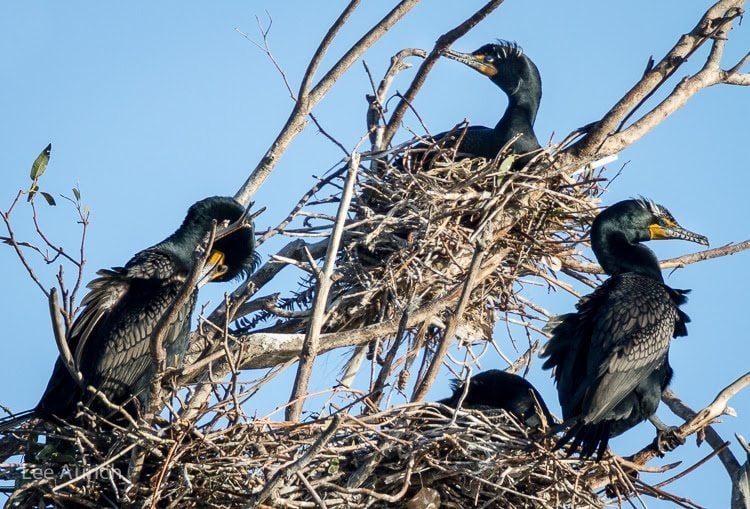GGBA docents showcase birds of Lake Merritt
By Maureen Lahiff
This year, we’re celebrating the 150th anniversary of the Yosemite Grant and California State Parks with much festivity. But Yosemite Valley and the Mariposa Grove were granted to the State of California in 1864 for “public use, resort, and recreation.”
What was the first area in the U.S. set aside specifically for wildlife? Oakland’s Lake Merritt!
In 1870, the Lake Merritt Wild Duck Refuge was created by the California State Legislature.
Today Lake Merritt looks much different than it did 150 years ago. The wetlands that once surrounded it are gone. But it is still a wintering spot for thousands of migratory waterfowl and a year-round home to a great variety of resident birds.
Every other Saturday morning from March through early June, GGBA provides docents at Lake Merritt in partnership with S.F. Nature Education. We set up a spotting scope and information table near the artificial islands, along the path just east of the Rotary Nature Center. I love serving as a docent there. Ducks come in close to the walkway and offer us good looks and plenty of chances to see them interacting. Gulls drop mussels on the path to crack their shells. Black-crowned Night Herons sit motionless in the trees. American White Pelicans sail by; in spring, we see the “breeding bumps” on their bills.
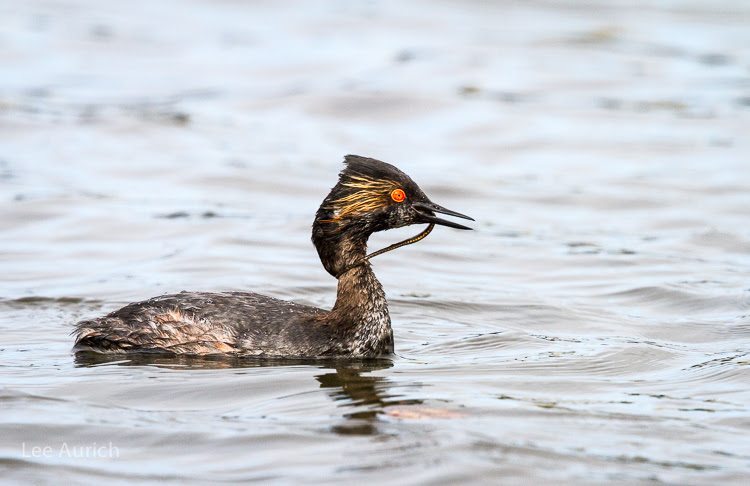
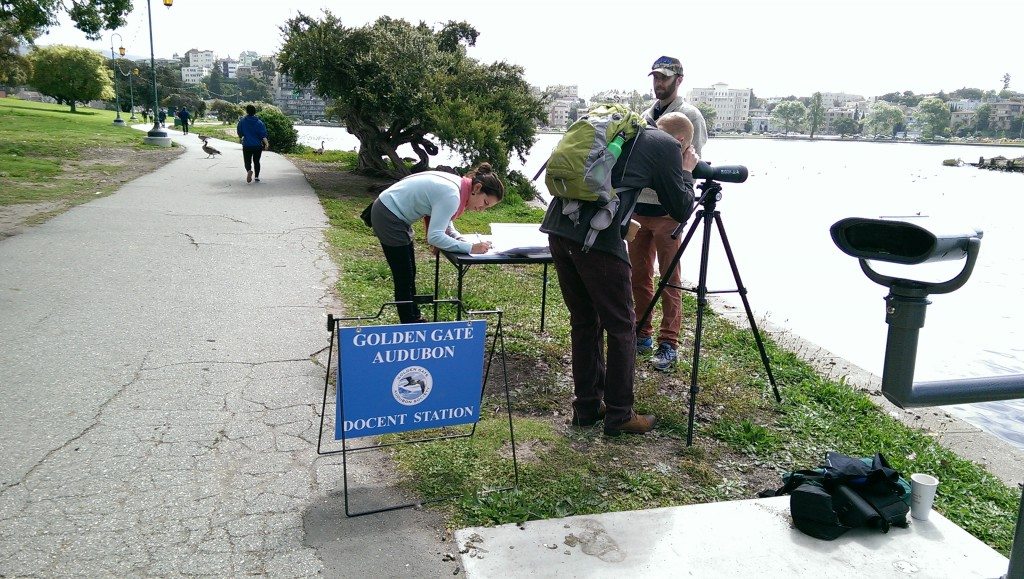
The Double-Crested Cormorants are one of the highlights for me. Forty to fifty pairs nest in trees on the islands. This time of year, we can actually see their double crests of feathers, and the bare throat skin near their bills — their gular patches — are bright orange-yellow. We saw a male displaying on a nest on March 8th, and several birds carrying sticks to refurbish nests for the current season on March 8th and 23rd. The males and females look alike, and both contribute sticks to the nest building.
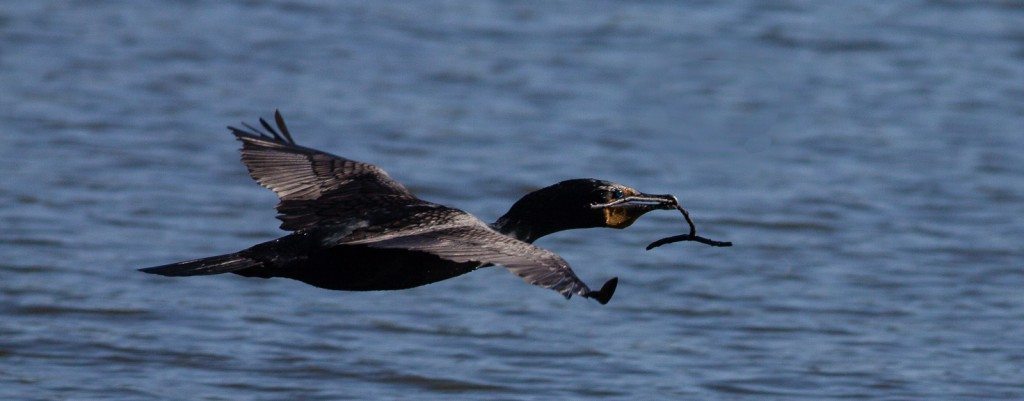
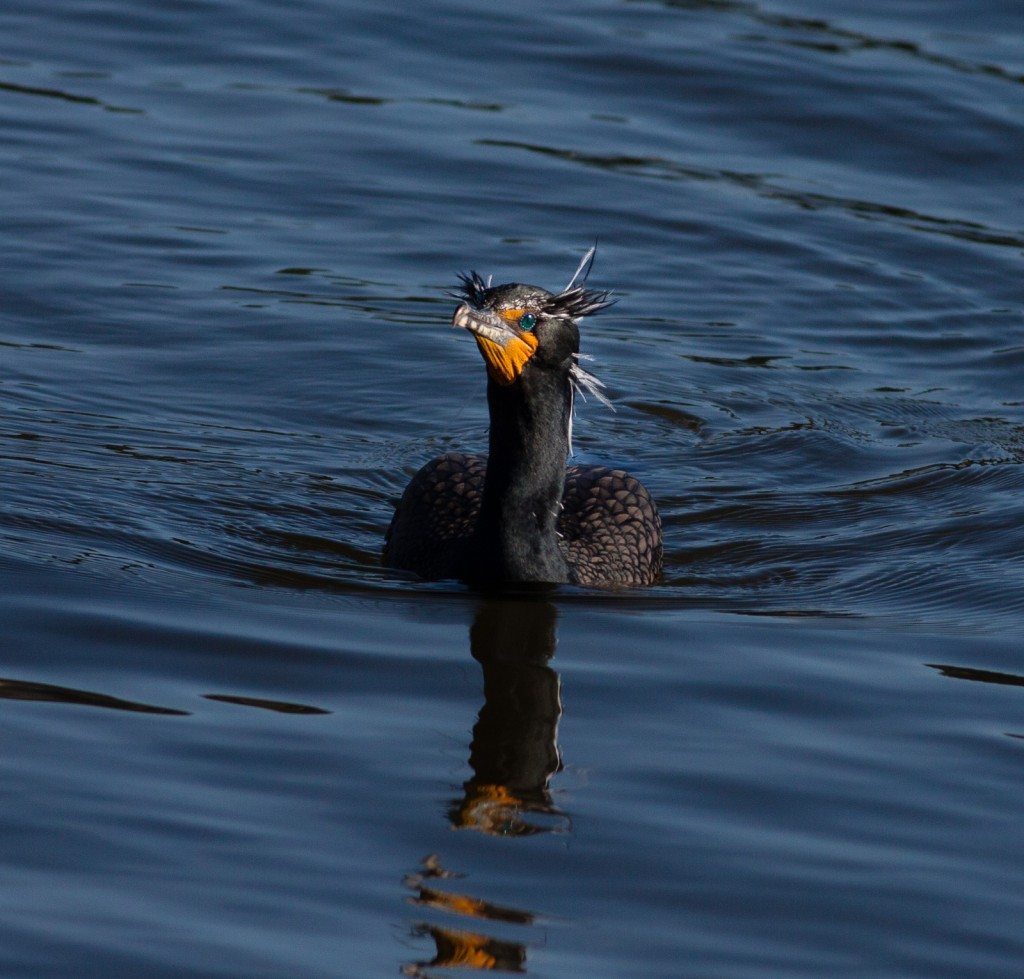
At the beginning of March, a lot of the wintering ducks were still there: many scaup (mostly Lesser Scaup), about a half dozen Canvasbacks, some Bufflehead, and Pie-billed Grebes. On March 23, the Canvasbacks were gone and there were fewer scaup.
The Black-crowned Night-Herons, Mallards, some of the gulls, and of course some of the Canada Geese are year-round residents. So are the egrets (both Snowy and Great) and American Coots. The goose population seems to be greatly augmented by migrants in the summer.
One of the things I appreciate about Lake Merritt is the diversity of people who walk by the Lake. It’s a pleasure to ask people to look at the birds close up. People often tell us that they walk here a lot but never noticed the cormorant rookery.
I usually just wave at runners, people wearing earbuds or talking on their cell phones, or parents having unhappy interactions with children. Lots of people say “no thank you” to an invitation to look at the birds close up, but a steady stream of adults do stop, look, and enjoy. We get all kinds of questions; some are even about the birds. On March 23rd, the course of the Oakland Marathon and related fun runs went right by our table, so we just waved to anyone wearing a race number.
Lake Merritt was named for Doctor Samuel Merritt, an early mayor of Oakland. He was the one who proposed setting aside the area as a wildlife refuge, to protect Oakland residents from stray hunting bullets as well as to protect the birds.
The lake and its surroundings have been continually altered since the 1850s. In 1868, a dam was built between this estuary and the Bay. The first island was built in 1925 and four more were added in 1956. They even have fresh water ponds. Alas, someone thought it was a good idea to bring plants from around the world to the shores of Lake Merritt. That strikes me as a strange way of celebrating Oakland’s diversity!
In 2013, the lake was reconnected with the Bay, so it is once again experiencing tidal action. Tidal marsh is being restored along the channel between the lake and the Bay. That’s creating more habitat for birds.
If you walk at Lake Merritt, come say hello to us and have a close-up look at those cormorants!
—————————-
Golden Gate Bird Alliance docents will be along the north shore of Lake Merritt this Saturday April 26 from 10 a.m. until noon, and then on Saturdays May 10 and 24 and June 7. Look for us on the path just east of the Rotary Nature Center, across from the artifical islands. (Google Maps labels those islands “Lake Merritt Wildlife Sanctuary.”) You can read more about the history of Lake Merritt on our previous blog post about “Lake Merritt: Birding Hotspot.”
————————–
Maureen Lahiff started birding in the Midwest. She greatly enjoys California birds, even the very easy-to-see ones, and observing their interactions. Even though she works at U.C. Berkeley as a lecturer in applied statistics at the School of Public Health, one of the birds from her childhood that she misses the most is the Northern Cardinal. She’s never been able to figure out how one of her favorite birds came to be the mascot of that little university down the Peninsula when it’s never been seen in Northern California.

